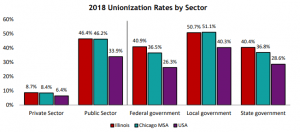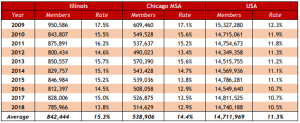Posted by Adam Redling
December 30, 2019
Illinois Governor J.B. Pritzker signed Illinois Works Jobs Program legislation Dec. 10 to strengthen a pillar of the state’s Rebuild Illinois initiative and increase diversity in apprenticeships for construction and the building trades. Senate Bill 177 takes effect Jan. 1, 2020.
Rebuild Illinois is a $45 billion capital program designed to improve the state’s infrastructure and provide resources to those in the building profession.
The Illinois Works Jobs Program will help ensure that Illinois residents from all communities not only benefit from capital projects, but also have access to careers in the construction industry and building trades.
The law encompasses a $25 million investment and works through community-based organizations. These organizations will help recruit new apprentices to work on construction projects and sets strong apprentice participation goals of 10 percent on public works projects. Through this pre-apprenticeship program, bid credit program and review panel, the new law is designed to help ensure the Illinois Works Jobs Program can build and maintain a diverse workforce on Rebuild Illinois projects.
“Rebuild Illinois is the largest, most robust capital plan in state history. We’re working with our partners to make sure every community in the state benefits from these good jobs-especially those who have been left out for far too long,” Pritzker says. “We’re putting Illinois’ government back on the side of working families, designing a state that is economically prosperous not just for the few, but for every Illinoisan, no matter the color of their skin or their ZIP code.”









